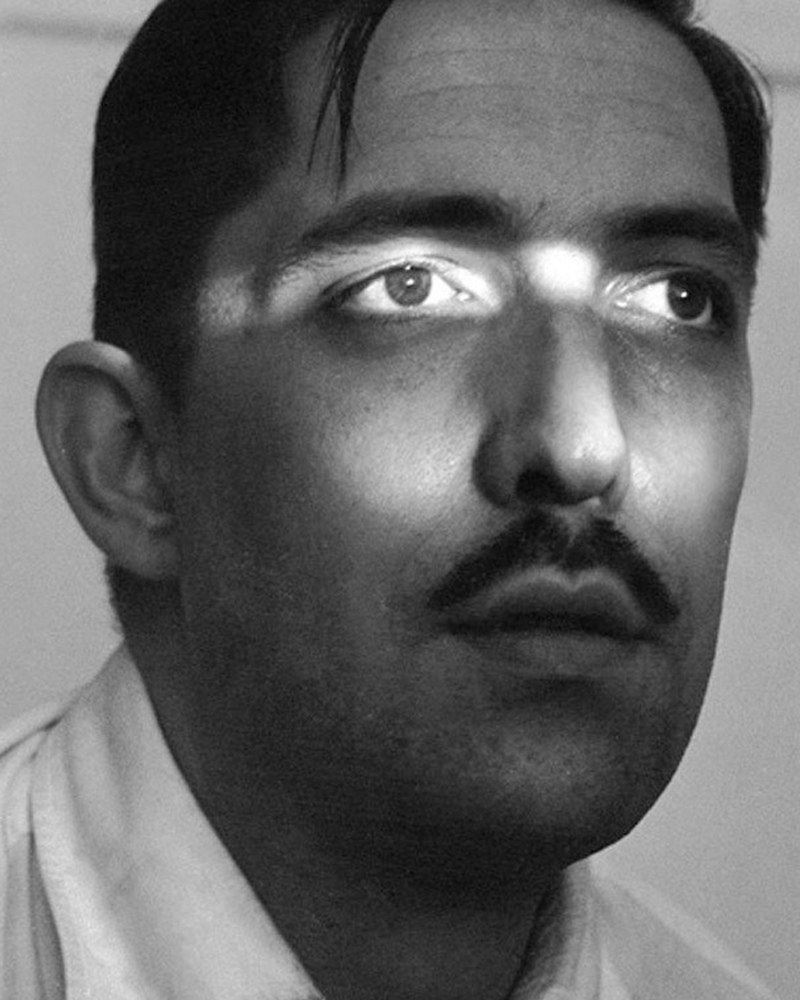Side Gallery
Side Gallery
WishlistFollow
Follow

Geraldo de Barros (Chavantes 27th February 1923 - Sao Paulo 17th April 1998) was a prolific artist across various media. He experimented relentlessly with utopian ideals, divulged through his exploration of furniture design from the mid-1950s till the late 1980s. While undoubtedly Brazilian, he drew much of his aesthetic influences from European avant-garde culture, from De Stijl and Bauhaus to Gestalt psychology.
Starting his artistic career in painting, he then found himself in photography; de Barros held a successful exhibition "Fotoformas" in 1950, the title being a reference to Gestalt. His artistic trajectory put him at the forefront of experimental photography, and in 1951 he was awarded a scholarship from the French government, which allowed him to travel and study in France. While in Europe, he also traveled to Zurich, where he met Max Bill, a former Bauhaus graduate who was collaborating at the time with the Scholl Foundation on the creation of a new design institute that had the ambition to continue the Bauhaus traditions with the integration of the human and technical element in design teaching and practice. Max Bill invited Geraldo to visit the institute (not officially opened till 1953) in Ulm, Germany, where he consequently spent some weeks attending workshops and was subsequently heavily influenced by what would be Max Bill's idea of Gute Form. The essence of Gute Form was the belief that objects, if carefully designed, can bring art into everybody's home, and art can be a way not only to reflect on the world but to make visible connections and abstractions without using verbal language. Here we can see a clear link between Geraldo's future ideals for furniture design and Bill's philosophy.
After his return to Sao Paulo and following further success as an artist, a change of government was to change Brazil. A new wave of investments from Europe was inaugurated by the president with the motto 'fifty years in five.' Modernization and industrialisation were being imposed from above. Geraldo de Barros, along with a Dominican Priest, Friar João Batista Pereira dos Santos, embarked on his first and most crucial venture as a furniture designer. In 1954 Unilabor was created and became a mechanism of modernization from below.
Unilabor was unity in work and a unity through work. The workers ran a self-managed e factory; it was a system of production that aimed to unify not only form and function but also a living community and production processes. This balance of forces certainly informed the discreet beauty of Unilabor furniture pieces. The tension that affected the products of the national wave of industrialization is clearly absent from the relaxed, warm lines of these pieces. In its context, Unilabor, in fact, quickly became a social model. It was a working environment that was perceived as healthy. It was created to be less a company, more a community.
The other two founding members of Unilabor, the engineer Justino Cardoso and the toolmaker Antônio Thereza provided specialist knowledge and skills while Geraldo de Barros made the drawings. Geraldo's approach to design was very humanistic. He intended to socialise art and its messages. By using the products, he designed for their daily activities, owners of Unilabor furniture were using art. For Geraldo, the designer's role consisted in mediating between society and industry, aiming to solve the tension between quantity and quality. João Batista and Geraldo agreed that if market trends ruled manufacturing, it eventually became informed by quantitative interests only, with a disadvantageous effect on the quality of the product and the working and living conditions of the workmen. Despite its ideals, Unilabor eventually ran into economic difficulties and eventually only lasted thirteen years.
Geraldo then dedicated himself to the furniture factory he created in 1964 with a former Unilabor cabinet-maker, Aloísio Bione. Rather than being a company with a clear aesthetics, as many Italian furniture manufacturers of the nineteen-sixties, to which it can be compared, Hobjeto Indústria e Comércio de Móveis was characterised by extreme flexibility of the form, which stays constant throughout the several lines of products Geraldo de Barros designed over the years. The furniture was also progressive, evolving to follow the dominant shapes of the time: more angular and squarer when the furniture was more geometric; more rounded when the products had softer lines; and finally made of long, continuous lines when Hobjeto introduced a furniture family made with tubular elements.
Both in the case of Unilabor and Hobjeto, interestingly, the essential component of Geraldo's design philosophy is the chair. This is particularly fascinating, especially if we consider that at the time, modular systems were prevalent amongst most industrial designers. While armchairs inspire intimacy and solitude, chairs, like sofas, have a significant social aspect. The proportions of Geraldo's chairs multiply into larger furniture items, and the environments arranged for publicity photographs are often constructed around the chair's presence.
ENQUIRE ABOUT THE DESIGNER